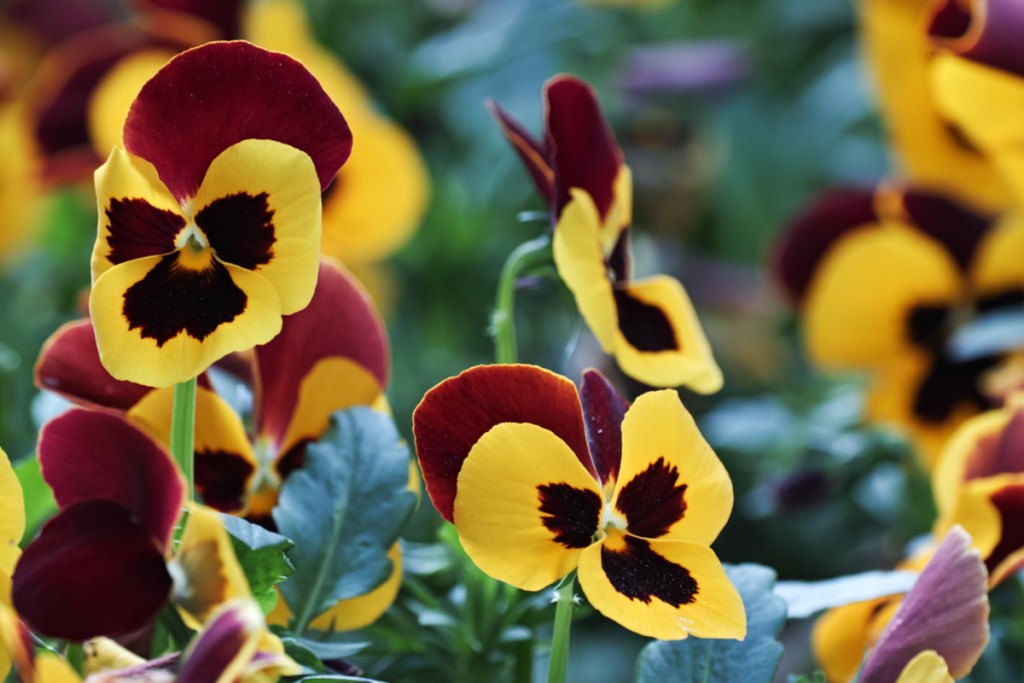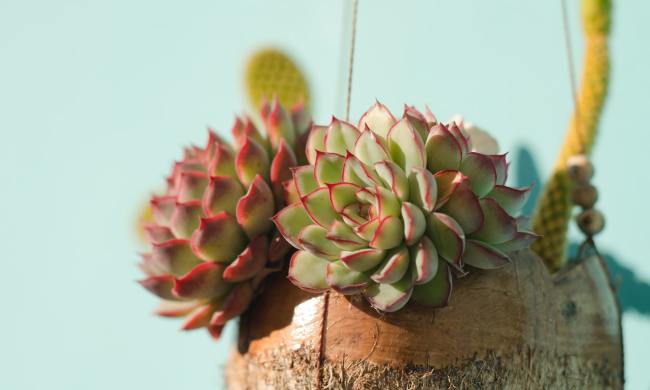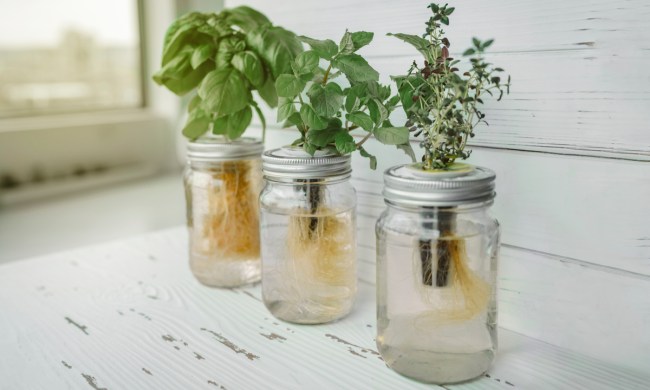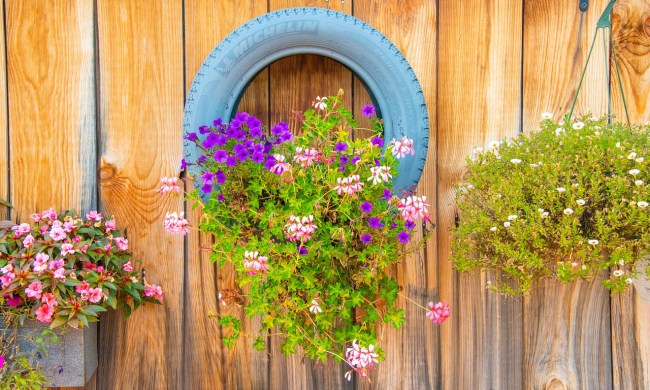When it comes to easy patio plants, there are a few questions you need to answer first. What plants do you like to grow? How much space do they need? Can you keep them outdoors during winter, or do they need to be brought inside? If you don’t have much indoor space but want to make year-round use of your patio, here are some winter plants you can grow that will fare just fine in colder climates and provide some much-needed greenery to your outdoor space.
It’s important to remember that just because a plant exists doesn’t mean it’s suitable for a container. (Try to imagine that large oak tree in your yard growing from a pot — impossible, right?) The ones that will thrive in container gardens, whether indoors or on a patio, have shallow root systems and small mature sizes, or they can be kept small with pruning and trimming. Let’s look at some of our favorites to add some color and life to your porch or patio this cold season.
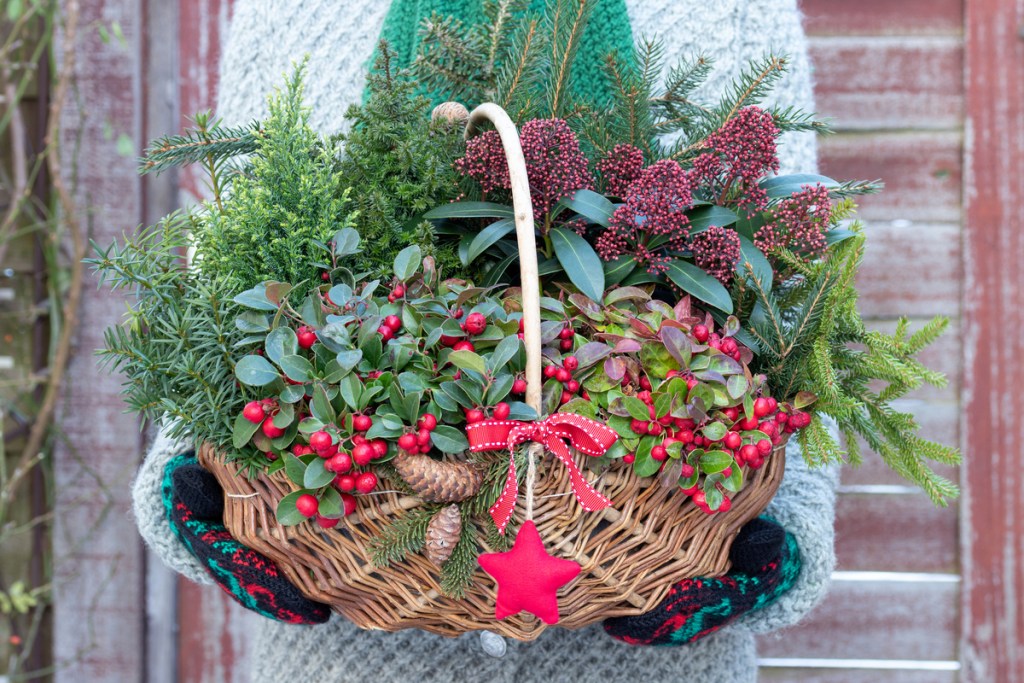
Wintergreen
Wintergreen plants are often grown as ground cover and filler plants for shaded garden beds, but did you know you can grow them in containers on the patio? The bright red berries will liven up your outdoor space when the rest of your plants have largely gone dormant. The green to reddish-bronze foliage even helps the plant double as outdoor holiday décor, fitting perfectly in with your holly berry and pinecone-covered wreath.
General care to keep in mind
Wintergreen plants can be grown outdoors year-round in hardiness zones 3 through 7. They don’t need any special care as long as they’re in a space where they can thrive, ideally one that mimics their natural habitat with dappled lighting. Best of all, the berries are edible! You don’t need to worry about them hurting you or your animals when eaten in moderate amounts, and many people opt to turn the berries into treats like tea.
Light needs: Partial sun to shade
Water needs: Regular moisture, especially when the berries start growing
Soil needs: Acidic, well-draining soil, preferably with a pH lower than 6.5
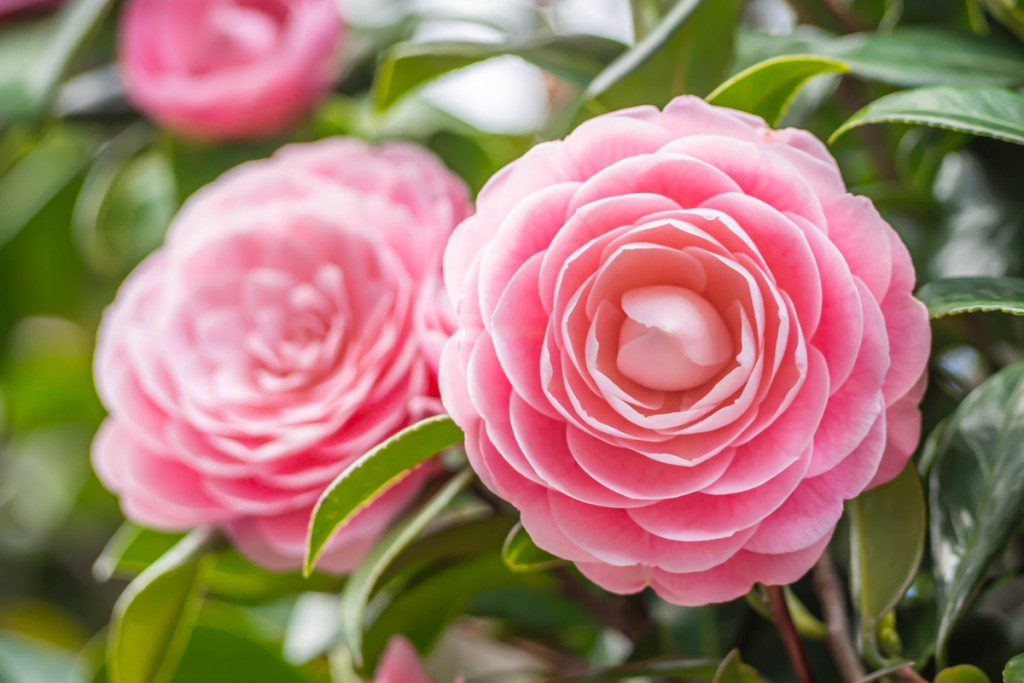
Camellias
Camellias are gorgeous flowers ranging from pink to red to white, with some even having a streaked design. Although they’re popular choices for creating bush borders or hedges, they look equally as beautiful in containers on your patio. Not many plants bloom during the colder season, so adding a bit of color along with beautiful foliage is a must for a wintry landscape.
General care to keep in mind
Different camellia varieties have different bloom times and can survive in different climates. Most are only hardy in USDA zones 7 through 9; however, there’s a variety that’s able to be grown outdoors year-round in USDA zone 6b. The location of your patio can play a factor, too, since south-facing areas have the potential to cause camellias to break dormancy too early. If you’re gardening in a colder climate, try to prioritize a north-facing patio or deck if you have one.
Light needs: Thrives in partial shade
Water needs: Likes to be consistently moist
Soil needs: Well-draining soil
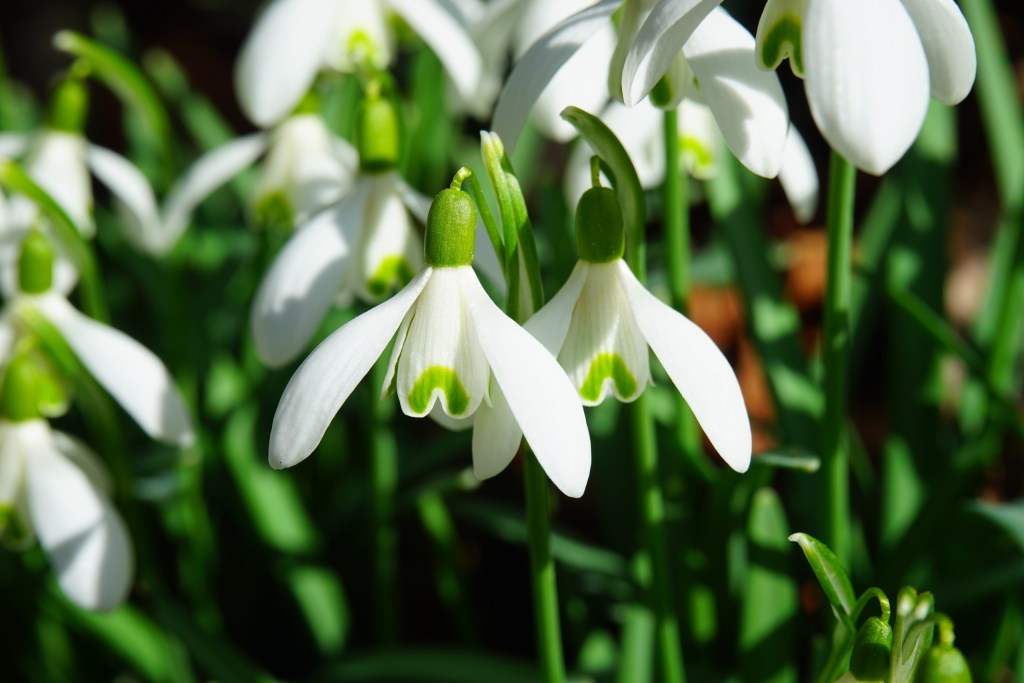
Snowdrops
Snowdrops are another one of those rare flowers that bloom during the colder months and hate warm winters. These flowers are best suited for northern, cool-weather gardeners as opposed to those living in warmer climates. The common variety of snowdrops only reaches 6 inches tall at max height, and each plant only grows one flower. If you want to have snowdrops in your patio containers, it’s best to plant a bunch in one container so that the pot fills out as opposed to waiting for a single plant to grow to the size of the container (which won’t happen).
General care to keep in mind
Snowdrops typically flower from January to March, making them the perfect plant to cap off the winter season. Since they grow mostly during colder seasons, they don’t have much trouble with pests or diseases. Snowdrops themselves, though, are poisonous to people and animals, so make sure you keep an eye on kids and pets when going outdoors, and always wear gloves when handling your snowdrops.
Light needs: Full sun to partial shade
Water needs: Water to keep the soil moist
Soil needs: Well-draining soil that ideally contains humus
Hellebores
Hellebores bloom from late winter to early spring, with blooms ranging from black to white in color. They’re fragrant and long-lasting, and they’re easy patio plants to care for because they don’t need much from you once established. Like snowdrops, hellebores are poisonous and should be kept away from kids and pets (though the upside is that deer hate them, too, so you don’t have to worry about the blooms getting munched on).
General care to keep in mind
Hellebore plants are hardy in USDA zones 3 through 9. Considering their preference for lack of sunlight, they’re perfect plants for north-facing patios during the winter. Although they bloom closer to spring in colder climates, they’re still a low-maintenance patio plant that looks lovely at the end of winter.
Light needs: Filtered sun to shade; they need no more than a few hours of dappled light to thrive.
Water needs: Regular watering, but they don’t like to be soggy
Soil needs: Well-draining, organic soil
Arborvitae
Arborvitae trees are hardy to USDA zones 2 through 7, which makes them a brilliant candidate for withstanding harsh winters. They’re one of the most versatile trees and won’t mind being grown in containers as accent plants for the winter months. Many gardeners even opt to use them as hedges around their property. Arborvitae trees are evergreen plants and come in an array of colors and sizes.
General care to keep in mind
The best way to help keep your arborvitae thriving through the winter is to make sure you water them properly and regularly during the growing season. These trees will even thank you for a small drink on warmer days during the winter. If you find that your arborvitae is suffering some winter damage, you can add a thick, 4-inch layer of mulch to help protect the roots. In some climates where winter is especially harsh, you may even need to wrap the tree in burlap to protect it.
Light needs: Full sun to partial shade
Water needs: Twice weekly for the first few months until established; change watering method come winter
Soil needs: Moist, well-draining soil
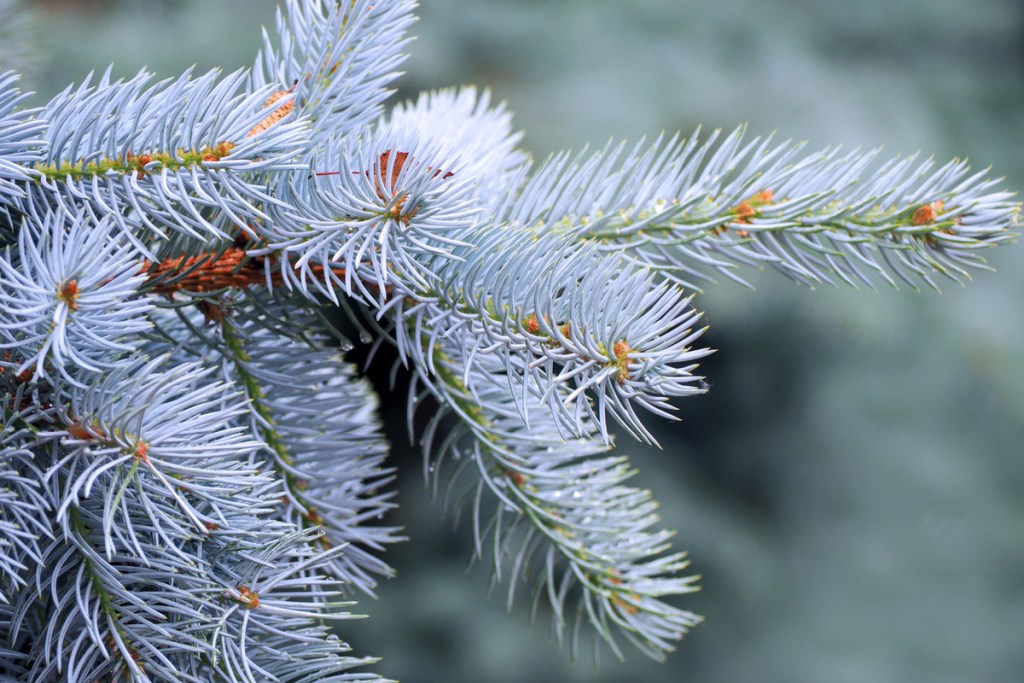
Colorado blue spruce
Colorado blue spruce trees are native to the Rocky Mountains and have become one of the most popular options for winter landscaping, so why not use one to dress up your patio? These evergreen plants have silvery-blue needles and a strong pine smell, which is often why they’re chosen as Christmas trees around the holidays. Having one in a pot on your porch means you can easily incorporate it into your holiday decor by simply putting a little bow on the pot or gently coiling some garland around the tree.
General care to keep in mind
Colorado blue spruce trees are hardy in USDA zones 2 through 7 and will bring a beautiful winter atmosphere to your patio. Their strong pine scent is a natural deterrent for deer, which is especially helpful if you’re growing other winter patio plants like wintergreen. They don’t need frequent fertilizing; however, if you want, you can feed them in the spring right before the growing season to help give them some extra nutrients.
Light needs: At least 6 hours of full sun per day
Water needs: Drought tolerant but thrives with moderate water levels
Soil needs: Moist, well-draining soil
Winter pansies
Pansies aren’t often known to be long-lasting winter plants, but in hardiness zones 7 through 9, they’re able to withstand a bit of cold. Pansies can survive and offer their gorgeous blooms as patio decor until the temperatures reach about 25 degrees Fahrenheit. They’re perfect for the end of fall, leading into the blooming season for other winter-hardy flowers and evergreens.
General care to keep in mind
To help your pansies remain as cold-hardy as possible, make sure you’re working with established plants. This means that you shouldn’t wait up until winter to plant them in containers, but rather time the planting for when the cold hits. In zones 6 and 7a, winter pansies should be planted at the end of September. For zone 7b, you’ll want to plant them in early October. And for zone 8, winter pansies will do best when planted at the end of October.
Light needs: Full sun to partial shade
Water needs: Regular watering
Soil needs: Moist (but not soggy), well-draining soil
There are plenty of easy and low-maintenance patio plants out there. The best thing you can do if you’re hoping to grow something on your patio is research what that plant needs to survive and determine if the small space will be a manageable environment. With that bit of knowledge, your patio garden will be thriving through the winter in no time.

